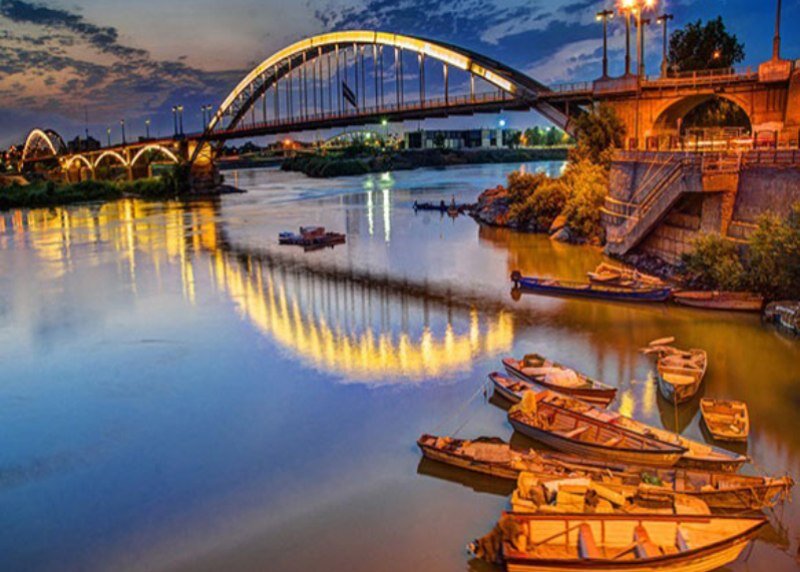Khuzestan loses tourism peak seasons over flood, coronavirus outbreak

TEHRAN- The southwestern province of Khuzestan has lost two main tourism peak seasons over flood and the outbreak of the coronavirus in the country, the deputy provincial tourism chief has said.
The flood in April 2019, which is a traditional peak season when Noruz, the Iranian new year starts, and the outbreak of the coronavirus during this year’s new year holidays, started on March 20, destroyed two golden revenue-generating opportunities for Khuzestan tourism in two consecutive years, CHTN quoted Gholam Shojaei as saying on Wednesday.
Although some other provinces were also flooded, they were able to make up for their losses during the summer due to the good weather, while in Khuzestan because of its hot weather; summertime is not travelers’ choice, the official added.
Khuzestan is home to three UNESCO World Heritage sites of Susa, Tchogha Zanbil, and Shushtar Historical Hydraulic System yet it is a region of raw beauty where its visitors could spend weeks exploring. The province is also a cradle for handicrafts and arts whose crafters inherited from their preceding generations.
Shojaei also noted that the province’s tourism industry has taken an estimated 2 trillion rials (over $47 million at the official rate of 42,000 rials) hit so far.
Pointing that the accommodation centers including eco-lodge units and hotels are affected by the coronavirus outbreak he said, “the cost of accommodation facilities and hotels is high, and when they have no income, they are no longer able to continue their activities.”
“Due to the lack of tourists, the province’s eco-lodge units are forced to close voluntarily, while travel agencies are also seriously damaged, which is leading to unemployment.”
The only way to improve the tourism in the region is to return to the situation before the outbreak of the virus, which unfortunately is out of everyone's control, he said and added “we just hope that the situation will return to normal and people will resume their travels so that the tourism industry in Khuzestan province will flourish again.”
Back in August, tourism minister Ali-Asghar Mounesan said that Iran’s travel sector has suffered a loss of 12 trillion rials (some $2.85 billion) since the outbreak of the coronavirus pandemic.
He also noted that the coronavirus pandemic should not bring traveling to a complete standstill. “Corona is a fact, but can the virus stop tourism? Certainly not. For us, the coronavirus is a new experience in dealing with crises that teaches tourism experts around the world how to deal with such a disaster, and thankfully governments are turning this into an opportunity for better planning.”
In June, the United Nations World Tourism Organization praised efforts made by Iran’s tourism ministry to manage the travel industry during the coronavirus pandemic. UNWTO Secretary-General Zurab Pololikashvili said in a letter to Mounesan that the country's measures have truly earned plaudits to mitigate the impact on tourism.
“A series of measures that the Ministry of Cultural Heritage, Tourism and Handicrafts of Iran has taken, in accordance with the guidelines and recommendations of UNWTO, has truly earned plaudits as an effective practice to mitigate the impact on tourism,” the letter reads.
Some experts believe that the coronavirus pandemic may turn tours and travels into luxury items as observing health protocols will raise the cost of travel in the country. Mohammad Ali Vaqefi, the vice president of the Iranian Tour Operators Association, warned earlier in June that with the continuation of the coronavirus outbreak, tourists may prefer individual travel rather than tours, adding that they may also choose to go on a trip by their vehicles and stay in tents or in nature instead of hotels.
Iran expects to reap a bonanza from its numerous tourist spots such as bazaars, museums, mosques, bridges, bathhouses, madrasas, mausoleums, churches, towers, and mansions, of which 24 being inscribed on the UNESCO World Heritage list. Under the 2025 Tourism Vision Plan, it aims to increase the number of tourist arrivals from 4.8 million in 2014 to 20 million in 2025. The latest available data show eight million tourists visited the Islamic Republic during the first ten months of the past Iranian calendar year (started March 21, 2019).
ABU/MG
Leave a Comment